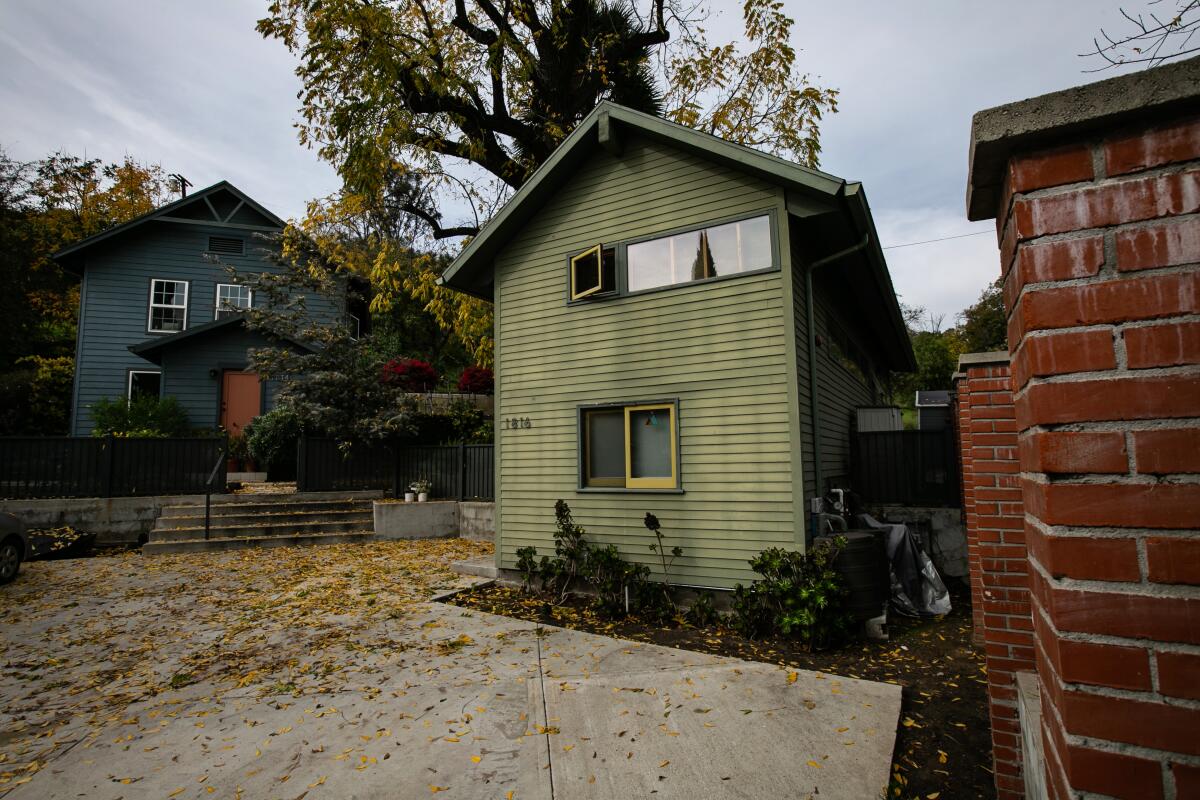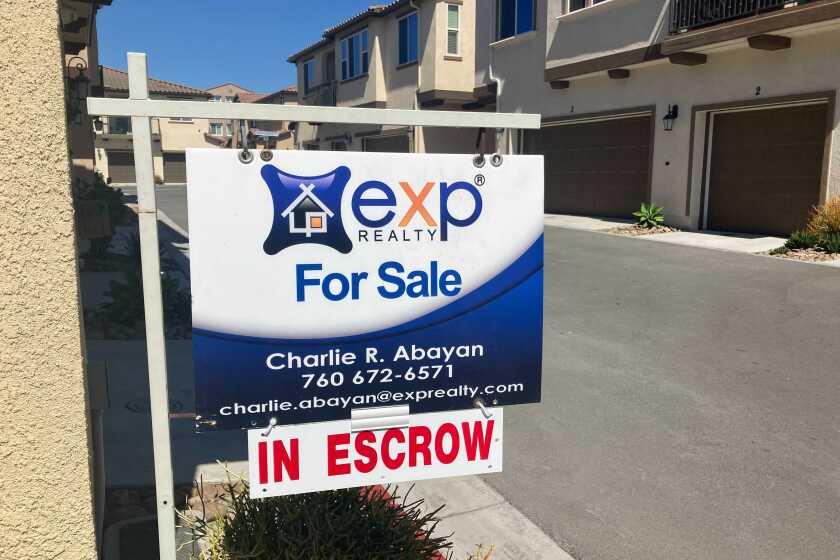California lawmakers put funding for ADUs in flux. What you need to know

- Share via
A popular state grant program to help low- and moderate-income California homeowners build accessory dwelling units may end up with $25 million in new funding following a tussle over dollars in the state budget.
The California Housing Finance Agency’s ADU Grant Program offered up to $40,000 to qualified homeowners to cover pre-construction costs of an ADU, including planning and permit fees for the structure. The program exhausted its initial $100 million months ago, and since then, Gov. Gavin Newsom and lawmakers have gone back and forth over $50 million in additional funding for ADU financing that had been included in a previous year’s budget.
For the record:
12:21 p.m. Sept. 5, 2023An earlier version of this story stated that the $50 million in last year’s budget for ADUs was for the grants program. It was for ADU financing, with grants as one of several possible uses.
In July, lawmakers approved and Newsom signed a budget bill that would restore the $50 million. On Aug. 30, the Assembly Budget Committee advanced a budget bill for fiscal years 2022 and 2023 that would take back the $50 million. Now, however, Chairman Phil Ting (D-San Francisco) says an amendment will put half of the money for ADUs back, specifically to restart the grants program, before the bill moves on this month.
The ADU money is in flux because of a disagreement between lawmakers and CalHFA over how to use it.
In an interview Friday, Ting said one of the hurdles for ADU construction has been the reluctance of California lenders, and particularly major banks, to develop attractive ADU loans. So two years ago, he said, lawmakers provided $50 million to CalHFA to create a loan loss reserve fund that would backstop ADU loans from private lenders.
You’ll probably need some kind of loan to help pay for an ADU. Your options will depend on your income, your home equity and your current mortgage.
The goal was to bring about systemic change in the industry, rather than just provide more grants for individual ADUs, Ting said. But after CalHFA studied the issue, “there was still a significant amount of hesitancy” at the agency to start a loan loss reserve program, he said.
Meanwhile, as homeowners built more ADUs, more lenders took an interest in the field. So after initially agreeing to redirect all $50 million to other programs, Ting said, he’s proposing to put $25 million into the existing ADU grant program and redirect the remainder.
Under the current income limits for borrowers, homeowners earning up to $194,000 in Los Angeles County would qualify for a grant. Ting said he may propose a lower limit to make sure the grant program is “much more targeted” on lower-income Californians who could not otherwise afford to build ADUs.
Supporters of the grant program argue that it does, in fact, direct help to borrowers who need it. For example, a joint letter from the California Community Economic Development Assn. and Homeplex, which helped the association distribute ADU grants for the state, notes that more than 60% of the recipients they’ve helped have been low-income households making less than 80% of the median income in their area.
“Many of these homeowners would not have been able to move forward with their ADU to build financial security for their families, if not for the support of the State Legislators and your support,” their letter to Ting and Senate Budget Committee Chair Nancy Skinner (D-Berkeley) stated. “These projects employ hundreds of workers and provide affordable rental housing for the local communities we serve. ADUs are the least expensive and quickest housing to build in the State.”
More aid for first-time home buyers
Ting’s latest proposal would steer $20 million of the $50 million to the California Dream for All Shared Appreciation Loan program. The Legislature initially provided $500 million for the popular program, which provides no-interest loans to first-time home buyers, but Newsom put $200 million of that on hold to help manage the state government’s budget crunch. Lawmakers and Newsom agreed to restore the $200 million in July.
The extra funding hasn’t translated yet into new loans, however.
The California Dream for All Shared program launched in late March, offering qualified first-time home buyers loans worth up to 20% of the purchase price of a house or condominium. The loans were especially attractive because they carried no interest and required no monthly payments.
If it sounded too good to be true, it was — but only because the program hit its application limit (and the number of people it could help, an estimated 2,300) in only two weeks and was effectively halted.
California’s state budget is restoring two assistance programs for first-time home buyers and ADU builders. Here’s what you need to know.
In the initial rollout, the loans were available only to households with earnings below CalHFA’s income limit for low- and moderate-income borrowers.
The loans, which can be used for down payments and closing costs, are structured as a second mortgage, which means they aren’t repaid month by month. Nor do they accrue interest the way an ordinary loan does. Instead, when the mortgage is refinanced or the house is sold again, the borrower pays back the original amount of the loan plus 20% of the increase in the home’s value.
If the home is ultimately sold for the same amount it was purchased for or less, the buyer won’t need to pay the additional 20%.
To receive a loan, borrowers must complete a home buyer education and counseling course (there are options for online and in-person classes on the CalHFA site) and a free online course specifically for shared appreciation loans.
The agency said it will provide an update on the Dream for All Shared Appreciation Loans program this fall that will include a timeline for applications. It’ll do so through email updates and newsletters you can sign up for.
More to Read
Sign up for Essential California
The most important California stories and recommendations in your inbox every morning.
You may occasionally receive promotional content from the Los Angeles Times.

















